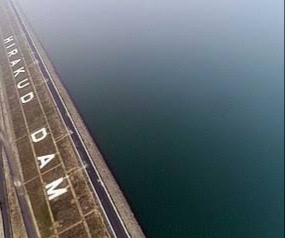Bhubaneswar: Odisha government has invited Expression of Interests (EOI) from interested farmers and entrepreneurs for cage aquaculture in Hirakud water reservoir.
The EoI invited by the director of fisheries is for availing long term lease (5 years extendable to a maximum of another 5 years) of the sub-zones in Hirakud reservoir.
The State government has decided to promote cage aquaculture, in the first phase, in 5 zones and 100 sub-zones of Hirakud reservoir which can cover around 2400 cages. These identified sub-zones will be leased out to Primary Fishery Cooperative Societies, fish farmers, private entrepreneurs or companies. Each sub-zone has a cage surface area of 600 m2 and can accommodate a maximum of 24 rectangular cages of 6 m length x 4 m width x 4 m depth dimension or 3 circular cages of 16 m diameter. In a rectangular cage around 3000 Kg of fish can be harvested.
Various fish species like Catla, Rohu, Mrigal, Amur Carp, Pangasius, Mono-sex GIFT tilapia, Asian Seabass / Barramundi, Pearl spot, Butter catfish will be allowed to be cage cultured. The cage culture guidelines have strict conditions for maintaining water quality, cage maintenance, fish health monitoring etc.
Odiaha has vast fresh water resources extending around 6.84 lakh hectares. During 2019-20, the State had produced around 8.16 lakh tonnes of fish. The demand and consumption of freshwater fish such as Indian Major Carps and other varieties is ever increasing in Odisha. In order to increase the fresh water fish production, the State Government has come out with a new policy to promote cage culture in medium and large reservoirs of the State. Utilizing a modest fraction (1%) of the surface area, the large and medium reservoirs can contribute a substantial quantity of fish to the total inland fish production basket of Odisha.
Cage Culture fisheries is an emerging technology for intensive production of fish and has a huge potential for increasing the fish production. It is often considered as the future of reservoir fisheries which can lead to achieving self-sufficiency in the fish demand of the state and also promote entrepreneurship in aqua culture and create job opportunities.






